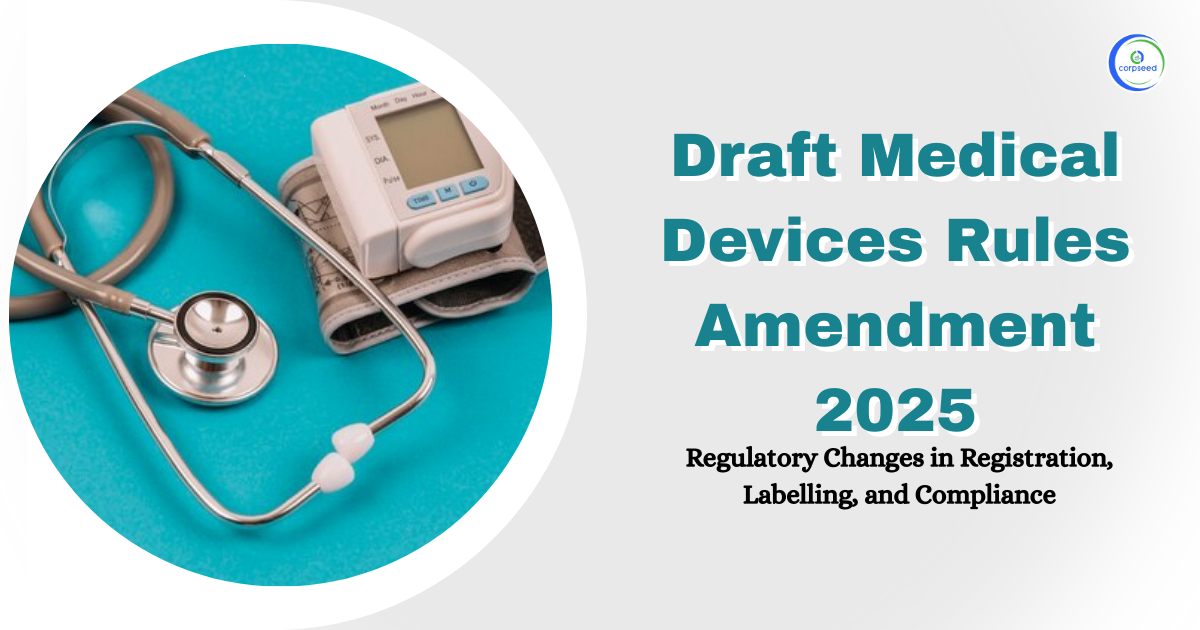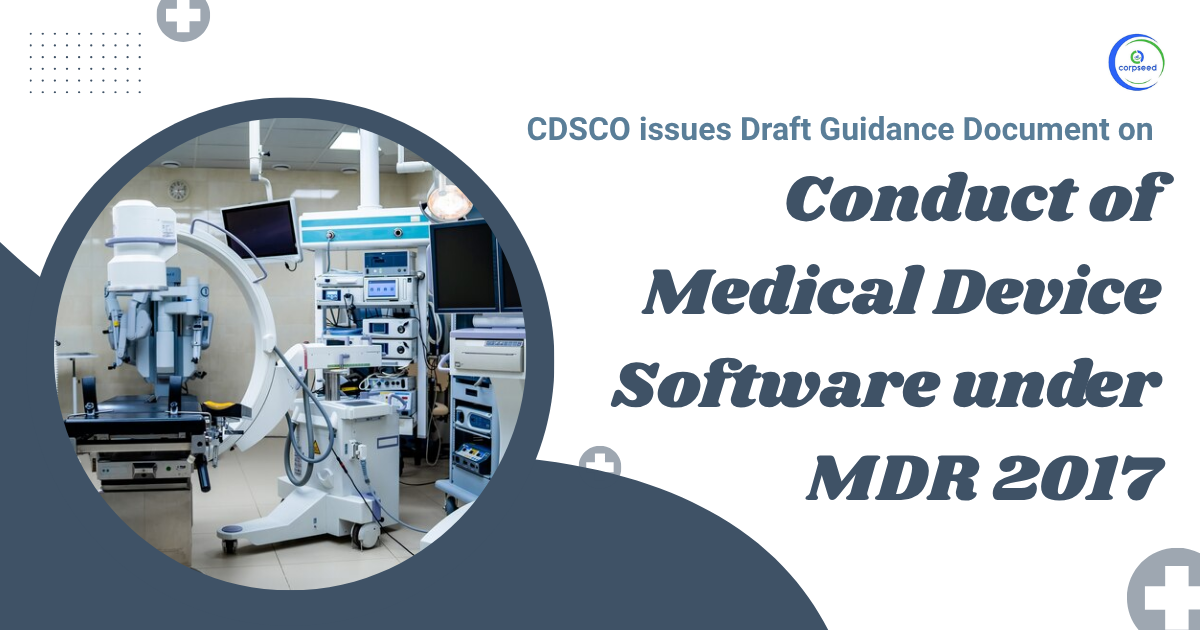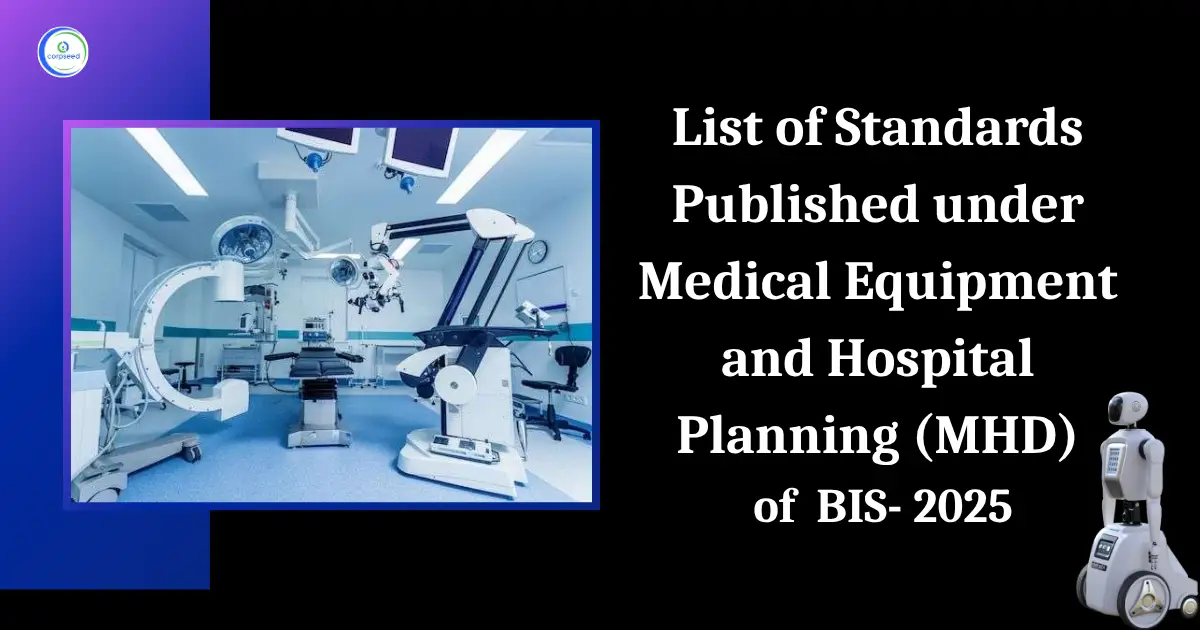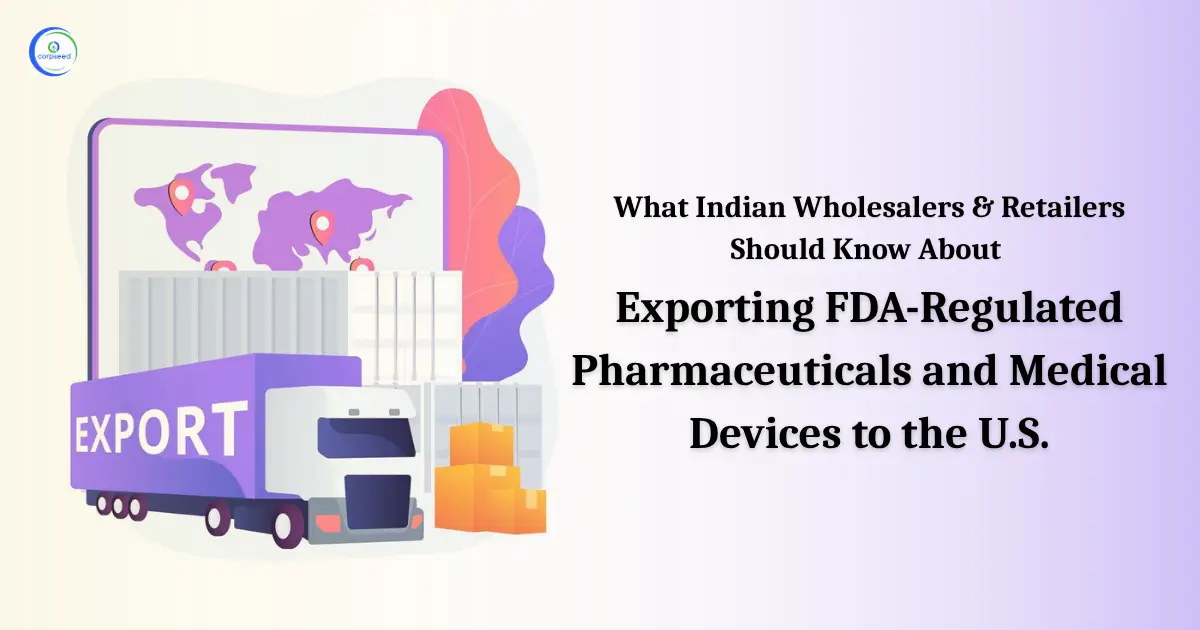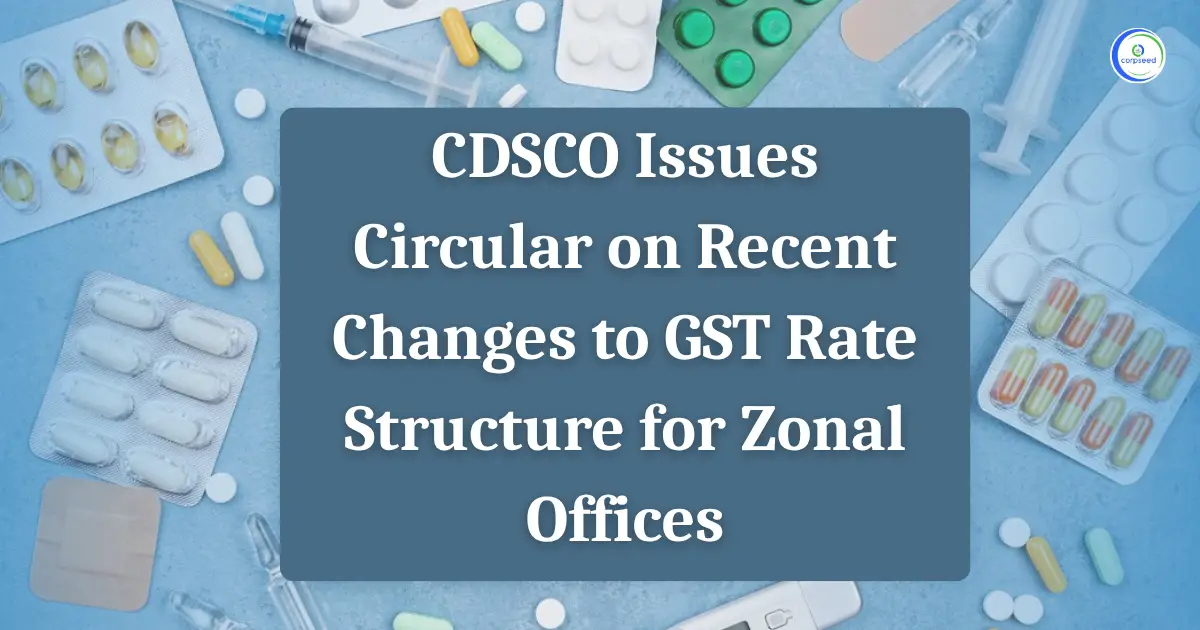A Brief Introduction of Ophthalmic
Ophthalmic is a medical study of Eye care and vision services. Those medical professionals who done their specialization in the medical and surgical care of the eye are known as ophthalmologists. They could be osteopathic physicians or Doctor of medicine (DO). They offer complete eye care, including vision services, eye exams, medical and surgical care, disease diagnosis and treatment, and management of consequences from other disorders, such diabetes. They also give vision services.
Table of Contents
- A Brief Introduction of Ophthalmic
- What is a Medical Device?
- Types of Medical Devices in India
- Eligibility Criteria for Medical Devices Registration/Import
- Process & Fee for Medical Devices Registration
- Documents required to be attached
- Time Involved & Validity for Registration
- Re-registration or Renewal of the Registration Certificate
- Post-Compliances after receiving registration
- How To Register Any New/Additional Medical Device If Medical Device Registration Obtained Already?
--------------Blog Contact Form-------------
From the 1st of October 2022, the said medical devices having risk class A and B will be covered under the licensing regime of CDSCO. Once the devices are under the scope of the licensing regime of CDSCO, all the importers and manufacturers of the said devices will have to apply for the license in order to sell their products in Indian Market.
The Ophthalmic category consists of total of 100 medical devices which are classified on the basis of their risk class and intended use. Out of which only class A and class B medical devices will fall under the licensing regime from 1 October 2022. The CDSCO listed medical devices are as below mentioned
| Ophthalmic Medical Devices | |||
| S. No. | Name of Device | Intended Use | Classification-IMDR |
| 1 | Adaptometer | An ophthalmic device intended to measure the time required for retinal adaptation and the minimum light threshold. | B |
| 2 | Amsler grid | An ophthalmic device intended to rapidly detect central and paracentral irregularities in the visual field. | A |
| 3 | Anomaloscope | A ophthalmic instrument used to test a patient for abnormal red/green colour vision by differentiating the red/green colour vision defects. | A |
| 4 | Anomaloscope | An ophthalmic instrument designed to measure the focusing power (dioptric power) and other optical characteristics of a spectacle lens, contact lens, or prism. | A |
| 5 | Bagolini lens | An ophthalmic plane lens, intended to determine harmonious/anomalous retinal correspondence. | A |
| 6 | Binocular vision test unit | An ophthalmic device for binocular vision testing. | A |
| 7 | Blepharoplasty scissors | A hand-held, manual, ophthalmic surgical instrument intended to be used to cut eyelid tissue during plastic surgery of the eyelids (blepharoplasty). | A |
| 8 | Colour discrimination spectacle lens | An ophthalmic lens intended to be worn infringement of the eyes to correct refractive vision conditions and that is coloured/tinted to enhance colour discrimination in patients with colour vision deficiency. | A |
| 9 | Colour discrimination tester | An ophthalmic lamp, used to test a person's ability to differentiate between colours. | A |
| 10 | Colour-discrimination eye chart | Intended for testing colour vision. | A |
| 11 | Conjunctival scissors | A hand-held, manual, ophthalmic surgical instrument intended to be used to cut the conjunctiva and Tenon’s capsule on the eye surface to access the sclera. | A |
| 12 | Contact Lens | Device intended to be worn directly against the cornea and adjacent limbal and scleral areas of the eye to correct vision conditions or act as a therapeutic bandage. | B |
| 13 | Contact lens radius gauge | A measuring instrument used in ophthalmology to determine the radius of curvature of contact lenses. | A |
| 14 | Corneal burr manual instrument | A hand-held, ophthalmic surgical instrument, used to excavate corneal tissue through manual rotation. | B |
| 15 | Corneal burr system | An assembly of devices designed for abrasion of the cornea and other eye tissues. | B |
| 16 | Corneal burr, abrasion | A device designed for abrasion of the cornea to polish corneal scratches and/or the pterygium bed after surgical removal, and/or for abrasion of lid margin lesions. | B |
| 17 | Corneal burr, rust ring removal | A device designed for gentle removal of rust stains (rust rings) from the cornea after the extraction of a ferrous foreign object. | B |
| 18 | Corneal epithelium perforator | Intended to create a number of small perforations in the epithelial layer of the cornea through which riboflavin can pass into the cornea during corneal collagen crosslinking, to treat corneal ectasia (typically keratoconus). | B |
| 19 | Corneal epithelium trephine | Intended to create a circular cut through the epithelial layer of the cornea to create an epithelial flap intended to be folded back during laser assisted epithelial keratomileusis (LASEK) surgery, after which the flap is replaced. | B |
| 20 | Corneal light shield | A device, typically made of a non-abrasive fluid-absorbing material that is placed on the surface of the cornea to shield the retina from excessive illumination during an ophthalmic procedure. | B |
| 21 | Corneal marker | A manual instrument intended to be used to imprint, indent, and/or incise corneal tissue prior to an ophthalmic surgical procedure. | B |
| 22 | Corneal resection holder | A device designed to hold donated corneal tissue so that it can be resected in preparation for transplantation. | B |
| 23 | Corneal scissors | A hand-held, manual, ophthalmic surgical instrument intended to be used to cut corneal tissue. | B |
| 24 | Corneal shield | A mechanical eye shield made of collagen that is placed on the eye to protect the cornea. | B |
| 25 | Corneoscleral punch | A hand-held, manual ophthalmic surgical instrument designed to excise a segment of tissue from the sclera or cornea of a patient or from grafts taken from cadaver donors. | B |
| 26 | Diagnostic condensing lens | An ophthalmic lens used in binocular indirect ophthalmoscopy to focus reflected light from the fundus of the eye. | A |
| 27 | Eikonometer | An ophthalmic instrument for diagnosing aniseikonia. | A |
| 28 | Electronic occlusion spectacles | An ophthalmic device designed to test and train vision for conditions where decreased visual acuity may be due to unequal vision in the eyes. | A |
| 29 | Enucleation Scissors | A hand-held, manual, ophthalmic surgical instrument used to cut tissue during eye surgery involving enucleation of the eye and/or its related structures. | A |
| 30 | Epiretinal/inner limiting membrane scraper | A hand-held manual surgical instrument intended to be used during posterior segment surgery to lift the inner limiting membrane (ILM) and/or an epiretinal membrane (ERM), and which may have additional posterior segment membrane manipulation uses. | B |
| 31 | Euthyscope | A modified ophthalmoscope that projects a bright light encompassing an arc of approximately 30 degrees on the fundus of the eye for the treatment of amblyopia. | B |
| 32 | Exophthalmometer | An ophthalmic instrument used to measure the degree of exophthalmos. | A |
| 33 | Eye cup | A receptacle designed to fit around the eye socket and which is filled with warm water or an eyewash solution and placed over the eye to allow the liquid to wash the affected eye. | B |
| 34 | Eye heat therapy pack | A device intended to be placed over closed eyes to apply heat for the treatment of meibomian gland dysfunction (MGD), dry eye syndromes, blepharitis and other related ocular conditions. | B |
| 35 | Eye irrigation shield | A device intended to be used with an eye irrigation kit/system to direct irrigation solution to the surface of the eye and allow the solution to gently lavage the surface of the eye. | A |
| 36 | Eye muscle clamp | An hand-held manual ophthalmic surgical instrument designed to atraumatically grasp and hold the extraocular muscles (EOM) during an ophthalmic surgical intervention. | B |
| 37 | Eye pad | A sterile, cushion-like device intended to protect the eye or to absorb eye secretions. | A |
| 38 | Eye spud | A hand-held, manual, ophthalmic surgical instrument intended to be used to remove a foreign body/object embedded in or adhering to the surface of the eye globe. | A |
| 39 | Eyelid clamp | A hand-held manual surgical instrument designed to atraumatically grasp and hold the eyelid during an ophthalmic surgical intervention. | A |
| 40 | Eyelid weight, external | An ophthalmic device that is applied to the outside of the upper eyelid to "lidload" the eyelid to restore upper eyelid muscle function. | A |
| 41 | Felt tangent screen | A black tangent screen intended for assessing the extent of the patient's peripheral visual field by mapping the visual response to a test object moved from the periphery towards the centre of the screen. | A |
| 42 | Fibreoptic general-purpose ophthalmic hook | A hand-held manual surgical instrument inserted into the eye during surgical intervention to manipulate anatomical structures or foreign bodies within the eye and simultaneously conduct a field of cold light to illuminate the surgical site. | A |
| 43 | Flieringa ophthalmic ring | A circular band, sutured to the sclera to prevent collapse of the globe during difficult intraocular operations. | B |
| 44 | Fornixscope | A manually-operated, ophthalmic device intended to provide indirect access and viewing of the upper conjunctival fornix and inner surface of the eyelid as an alternative to eyelid eversion. | A |
| 45 | Fresnel lens | A very thin and flexible ophthalmic lens intended to be applied to the back of spectacle lenses to focus light to a focal point to help manage various vision conditions. | A |
| 46 | Fresnel prism | A device intended to be applied to spectacle lenses to give a prismatic effect typically to manage strabismus or other eye muscle dysfunction. | A |
| 47 | Haidinger brush imager | An ophthalmic device designed to produce an image which facilitates his/her visual function evaluation, particularly the macular integrity. | A |
| 48 | Hand-held campimeter | A portable, hand-held device intended for assessing the central 30º visual field. | A |
| 49 | Hand-held telescope | A device that consists of an arrangement of ophthalmic lenses or mirrors with a handle intended to enlarge images for a visually impaired patient/person. | A |
| 50 | Hruby fundus lens | A 55 dioptre non-contact diagnostic ophthalmic lens intended for use in the examination of the vitreous body and the fundus of the eye under slitlamp illumination and magnification. | A |
| 51 | Indirect binocular ophthalmoscope | An ophthalmic instrument designed to examine the interior of the eye allowing the examiner to clearly see a wide angle, stereoscopic impression of the details of the fundus (retina) and other structures. | A |
| 52 | Keratome | An ophthalmic surgical instrument intended to shave tissue from sections of the cornea for a lamellar (partial thickness) transplant. | B |
| 53 | Lacrimal tube | A implantable, single-lumen tube intended to provide tear drainage from the front surface of the eye, and also to facilitate saline solution irrigation to a paranasal sinus to manage chronic rhinosinusitis. | B |
| 54 | Lens spoon | A hand-held ophthalmic surgical instrument used in ophthalmic surgery to manipulate/remove the lens of the eye. | A |
| 55 | Maddox trial lens | A special ophthalmic trial lens in the form of a rod or series of rods (grooves/cylinders) that changes the size, shape, and colour of an image to dissociate the eyes in the evaluation of eye muscle dysfunction. | A |
| 56 | Mirror-prism spectacles | An optical device intended to enable the patient to see over the top of their head enabling them to look forward in the direction their head is pointing. | A |
| 57 | Nystagmus-inducing optokinetic drum | An ophthalmic device intended to elicit nystagmus. | A |
| 58 | Nystagmus inducing tape | An ophthalmic device intended to be moved across a patient's field of vision to elicit optokinetic nystagmus and to test for blindness. | A |
| 59 | Ocular occluder | An hand-operated ophthalmic device typically used by an optician/optometrist to temporarily prevent or attenuate (occlude) the passage of light (vision) to one eye, during examination and testing of a patient's eyesight in the opposite eye. | A |
| 60 | Ophthalmic caliper | A hand-held manual ophthalmic measuring instrument consisting of two legs hinged at one end and designed to measure the diameter, length, angles, and thicknesses of the eye. | A |
| 61 | Ophthalmic distometer | An ophthalmic instrument designed to measure the distance between the cornea and a spectacle or trial lens (vertex distance). | A |
| 62 | Ophthalmic examination station | A device assembly intended to provide complete ophthalmic examination position and support conditions for the patient and clinician. | A |
| 63 | Ophthalmic head reflector | A head-worn ophthalmic device intended to reflect light onto the eye of a patient to allow examination of the eye and its associated structures. | A |
| 64 | Ophthalmic instrument table | A device designed as a work surface, with or without storage compartments, that supports ophthalmic instruments for the examination/treatment of a patient's eyes. | A |
| 65 | Ophthalmic operating tabletop | A component of a modular operating table intended to provide support for and stabilization of the head of the patient (typically includes a headrest) and to help provide optimal access for the surgeon(s) during the intervention (e.g., by having a small-width table top and therefore a shorter stretch distance for the surgeon). | B |
| 66 | Ophthalmic soft-tissue surgical forceps | A hand-held manual instrument designed to grasp and manipulate intraocular tissues during ophthalmic surgery (e.g., anterior segment surgery, vitreo-retinal procedures, iridectomy, capsulorhexis). | B |
| 67 | Ophthalmic surgical device handling forceps | A hand-held manual surgical instrument with blades designed to grasp and manipulate a nonimplantable invasive ophthalmic surgical device (e.g., ophthalmic cannula, handless iris retractor) and/or for ophthalmic suturing. | A |
| 68 | Ophthalmic suture scissors | A hand-held, manual, ophthalmic surgical instrument intended to be used to cut suture during eye surgery. | A |
| 69 | Ophthalmic tonometer | An ophthalmic, measuring instrument designed for determining the intraocular pressure (IOP). | B |
| 70 | Ophthalmic ultrasound imaging system | An assembly of devices designed for ophthalmic ultrasound imaging procedures. | B |
| 71 | Ophthalmodiastimeter | An ophthalmic instrument for determining the proper distance at which to place prescription lenses for the two eyes. | A |
| 72 | Ophthalmoleukoscope | An ophthalmic device intended to be used for testing colour perception by means of colours produced by polarized light. | A |
| 73 | Orbital depressor | A hand-held ophthalmic surgical instrument used to displace tissue to facilitate examination of the surrounding area in the orbital cavity during eye surgery. | A |
| 74 | Perimeter | A diagnostic, ophthalmic instrument intended for assessing the extent of the patient's peripheral visual field. | A |
| 75 | Photometer | An ophthalmic instrument intended to be used to test ocular balance. | A |
| 76 | Phoropter | A mechanical ophthalmic device that is used during an ophthalmic examination; typically to determine a patient's prescription for glasses. | A |
| 77 | Pleoptophor | An ophthalmic instrument used for the treatment of eccentric eye fixation (casts in the eye) by dazzling the perimacular retina, thereby relatively enhancing the visual capabilities of the fovea. | A |
| 78 | Polatest | An ophthalmic device used for evaluating hidden (latent) squinting, i.e., when the patient is not aware of the condition, and also when it cannot be seen. | A |
| 79 | Ptosis crutch | A device that is attachment to an ophthalmic spectacle frame to prop open the upper eyelid in cases of ptosis. | A |
| 80 | Pupillograph | A graphic recorder used for recording the response of the pupil to reflected light. It is used for ophthalmic diagnostic purposes. | A |
| 81 | Pupillometer | An ophthalmic instrument used for measuring the width or diameter of the pupil. | A |
| 82 | Scleral marker | A manual instrument used to indent or imprint the surface of the sclera during an ophthalmic surgical or perioperative procedure. | B |
| 83 | Sclerotome | A hand-held manual ophthalmic surgical instrument that is knife-like in design and intended to be used to incise the sclera during a sclerotomy. | A |
| 84 | Scotometer | An instrument used for the recording and measuring of the areas of field of vision that is reduced, i.e., relative scotoma, or loss of sensitivity to light (absolute scotoma or blind spots). | A |
| 85 | Spectacle-mounted telescope | A device that consists of an arrangement of ophthalmic lenses or mirrors designed to be attached to a pair of spectacles and intended to enlarge images for a visually impaired patient/person. | A |
| 86 | Spectacles | An ophthalmic device that are worn in front of the user's eyes to improve their ability to see normally. | A |
| 87 | Surgical binoculars | A pair of lenses intended to be mounted onto a surgeon's spectacles to function as small telescope and provide a magnified image of the visual field during patient examination or surgical intervention. | A |
| 88 | Synoptophor | A ophthalmic device used for the evaluation and training of a patient's binocular function. | A |
| 89 | Tachistoscope | An ophthalmic device designed to flash words or images at different speeds, for the purposes of ophthalmic diagnostic testing. | A |
| 90 | Tinted spectacle lens | An ophthalmic device used to correct the refractive errors of that patient's eyesight and to attenuate light radiation by absorption, reflection, or polarization. | A |
| 91 | Tinted spectacles | An optical device that contains a pair of tinted spectacle lenses that are worn in front of the user's eyes to correct the refractive errors of that patient's eyesight and to attenuate light radiation by absorption, reflection, or polarization. | A |
| 92 | Trial lens | An individual ophthalmic lens from a trial lens set. | A |
| 93 | Trial lens clip | A device used to hold prisms, spheres, cylinders, or occluders on a trial lens frame or set of spectacles during vision testing. | A |
| 94 | Trial lens frame | A device used in ophthalmic work for placing, holding, and exchanging trial lenses in front of the eyes of the patient during a sight-testing procedure. | A |
| 95 | Trial lens set | A set of ophthalmic trial lenses of various dioptric powers intended for vision testing to determine the required refraction. | A |
| 96 | Ultrasound pachymeter | An ophthalmic device designed to use ultrasound to measure the thickness of the cornea, and may in addition be designed to measure axial length and anterior chamber depth. | B |
| 97 | Visual chart | An ophthalmic chart (Snellen chart) used in testing visual. | A |
| 98 | Visual lightbox | A light viewing box that uses a translucent version of the ophthalmic chart (Snellen chart) used for testing visual acuity. | A |
| 99 | Visual projector | An ophthalmic device intended to project an image on a screen to test visual acuity. | A |
| 100 | Visual evoked-potential electrode | An electrical conductor intended to record changes in the electrical potential for the purpose of measuring visual evoked responses. | A |
Central Drugs Standard Control Organisation:
India is growing as one of the nation's leading in the pharmaceutical business and is among the top ten nations in terms of the pharmaceutical industry. Several factors such as large population, growing health awareness, affordable medical facilities, and better research facilities have given rise to the manufacturing and development of pharma business in India. However, with the increasing scope for the growth of the pharma industry in India, there are possibilities for the sale/purchase of medical equipment & device illegally or without jurisdiction. Therefore, the Government of India has established the Central Drug Standards Control Organization (CDSCO), which is the primary legislative body and has been responsible for the regulation, control, and management of pharmaceuticals and medical devices in India apart from the appointment of the Drug Controller General of India (DCGI), and has conferred the responsibility of undertaking assessment, approval and regulation of further compliances(import, export, sale, distribution) in the matters of medicinal drugs and medical devices(including any existing or any new) drugs/devices in accordance with the provisions of the Drugs and Cosmetics Act 1940.

What is a Medical Device?
According to the latest definition as provided under the Medical Devices Amendment rules 2020, as notified on 11.02.2020. However, taking care of circumstances the government has exercised its powers to include more categories by widening the scope of the definition of “Medical Device” under the Act. It states-
"Devices used in general medical practice such as medical apparatus, instruments, implants appliance, etc., which are either used individually or in combination, and are intended to be specifically applied for human beings or animals and are further intended to obtain the desired function by such means and for such purposes as provided below, but is not intended to meet the primary intended action on human body or animals by any pharmacological or immunological or metabolic means-
- Analysis, prevention, observing, treatment, or mitigation of any disease or disorder;
- Analysis, observing, treatment, mitigation, or support for any injury or disability;
- Examination, replacement or alteration or support in findings of the anatomy or a physiological process;
- For supporting or sustaining life;
- Decontamination of medical devices; and
- Conception related equipment’s & devices.
Therefore, every manufacturer or importer or both of any medical devices in India shall be required to obtain registration as per the provisions of the Drugs and Cosmetics Act 1940. Any failure to comply with the same may invite legal action including penalty & prosecution under the Act.
Types of Medical Devices in India
Provisions related to the import, manufacture, sale & distribution of medical devices are regulated under the provisions of the drug and cosmetics Act 1945. Under the New Medical Rules 2017, all medical devices have been classified into four different categories depending on their usability & risk involved as provided below.
- Class A:- Low-risk devices like a thermometer, tongue depressors, etc.
- Class B:- Low moderate risk like Hypodermic Needles, suction equipment, etc.
- Class C:- Moderate high-risk devices like Lung ventilators, etc.
- Class D:- High-risk devices like Heart valves, implantable devices, etc.
Where Class A & B devices are considered to be less risky and moderate devices, for which the application to manufacture has to be filed to the State Licensing Authority. Whereas Class C &D are considered to be high and very High-risk devices and the application for these has to be filed to the Central Licensing Authority of India.
Eligibility Criteria for Medical Devices Registration/Import
The provisions related to activities such as Import, manufacture, sale and distribution of medical devices have been regulated under the provisions of the Drugs & Cosmetic Act 1940 & Rules 1945. Therefore, any person/firm/enterprise, etc. holding a wholesale drug license and/or manufacturing license issued under the Drugs and Cosmetics Act, 1940 and Rules 1945 could make an application for Registration and import of medical devices into India.
Process & Fee for Medical Devices Registration
Types of Medical Devices Registration
- Registration/Import of any existing medical device;
- Registration /import of any new medical device
Step 1: Determine Whether Your Medical Device Is Under Notified List or Not
The CDSCO authority has provided a list of notified medical devices that need to compulsorily obtain registration under the Drugs and Cosmetics Act 1940 and in accordance with Medical devices rules 2017. However, there may be any medical devices that have not been expressly notified by the CDSCO authority, or in case of new medical equipment, the manufacturer/importer shall be required to obtain a NOC in such cases. For instance, Blood Grouping Sera Ligatures, Sutures, Staples Intra-Uterine Devices (Cu-T), Condoms, Tubal Rings, Surgical Dressing, Umbilical Tapes, Blood / Blood Component Bags do not need registration, whereas devices such as spinal needles, cochlear implants, syringes, and needles, heart valves, endotracheal tubes and catheters among others should undergo registration provides with the CDSCO.
Step 2: Appoint an Authorized representative (in case of Foreign Entity)
For a foreign business manufacturer entity, it shall be necessary to appoint an authorized business entity in India, who shall be the contact person for the inspection authorities during the process, assist in device approvals, and registrations process, and vigilance adverse event reporting. The Indian Authorization should hold a wholesale drug license in forms 20B& 21B.
Step 3: Fill out the applicable form for Medical device Registration
In the next step, the manufacturer/importer for MD shall be required to submit the registration form of a regulatory dossier, along with all the prescribed documents along with the prescribed fee on the CDSCO portal to the DGCI (Drugs Controller General of India) by logging on to the online CDSCO portal https://cdsco.gov.in/opencms/opencms/en/Home/ and signing into the portal.
Following forms along with applicable govt. fees have been provided below, which shall be required to be paid through payment challan-
| Applicant Type | Manufacturer(Loan License) | Application Form | License Form |
| Importer | A,B,C,D | MD-14 | MD-15 |
| Manufacturer | A B | MD-3 | MD-5 |
| Manufacturer(Loan License) | A B | MD-4 | MD-6 |
| Manufacturer | C, D | MD-7 | MD-9 |
| Manufacturer(Loan License) | C, D | MD-8 | MD-10 |
However, in the case of new equipment or medical device-
| Application Type | Class of MD | Application Form | License Form |
| Importer Clinical Investigation | A,B,C,D | MD-22 | MD-23 |
| Import License | A,B,C,D | MD-26 | MD-27 |
| Test License(for importer) | A,B,C,D | MD-16 | MD-17 |
| Manufacturer (Clinical investigation) | A,B,C,D | MD-22 | MD-23 |
| Manufacturer License | A,B,C,D | MD-26 | MD-27 |
| Test License | A,B,C,D | MD-16 | MD-17 |
Further, each application shall be supported with the list of documents and the requisite fee as provided in the online portal of CDSCO-
| Type of License | Class of Device | Applicable Regulation | Govt. Fee |
For Manufacturing/Loan License
|
A or B; | 20(2) | Rs. 5000 Rs. 500 |
For Manufacturing/Loan License
|
C or D; | 21(2) | Rs. 50,000 Rs. 500 |
For Import License(other than IVD)
|
Class A | 34(2) | 1000 Dollar 50 Dollar |
Import License(other than IVD)
|
Class B | 34(2) | 2000 Dollar 1000 Dollar |
Import License (in IVD)
|
Class A or B | 34(2) | Rs. 1000 Rs. 10 |
Import License (other than IVD)
|
Class C or D | 34(2) | 3000 Dollar 1500 Dollar |
Import License(in IVD)
|
C or D | 34(2) | 3000 Dollar 500 Dollar |
Step 4: Obtain Certificate of Registration in Prescribed form
Once the application is submitted on the CDSCO portal, the DGCI registration authority may send a query through an inquiry letter to the manufacturer or from the authorized representative of the importer, along with the timeline within which the query should be answered and sometimes, may also ask for a technical presentation On satisfaction the authority may issue a license in such form as provided in the above list. After obtaining registration, the manufacturer or his authorized representative may apply for an importer license.
Documents required to be attached
- Form 40
- ISO 13485 certificate
- Full Quality Assurance Certificate
- CE Design Certificate
- Undertaking that all information provided is authentic
- Either a Free Sale Certificate or Certificate from the Foreign Government
- Certificate of Marketability from GHTF (Australia, Canada, Japan, the European Union, and the United States);
- Plant Master Report
- Device Master File
Time Involved & Validity for Registration
If the DGCI doesn’t ask for a Technical Presentation or Subject Expert Committee (SEC) audit, it takes around 6-9 months to obtain a Medical Devices Registration. In cases where Technical Presentation or Subject Expert Committee (SEC) audit, is required, it may take additional 3-6 months.
Once obtained the Registration Certificate shall be valid for a total period of 3 years from the date of issue of registration unless suspended or cancelled by the DGCI authority for proper causes.
Re-registration or Renewal of the Registration Certificate
The application for renewal of the MD registration certificate shall be made at least nine months from the expiry of the registration certificate. Though there are no additional requirements for the renewal of registration, it shall be necessary for the certificate holder to provide a copy of the Plant Master File (PMF) and Device Master File (DMF), where there are no changes in the PMF and DMF,
Post-Compliances after receiving registration
Though there are not many compliances in place about the registration certificate, it shall be compulsory for the certificate holder to-
- In case of any change that has taken place about the constitution of the firm and/or address of the registered office/factory premises, the MD manufacturer/authorized representative of the importer to intimate the licensing authority regarding the same in writing;
- In case any such change has taken place, the existing registration certificate shall be valid for a maximum period of three months from the date on which the change has taken place, and during this time, the manufacturer/authorized representative shall be required to obtain a fresh Registration Certificate;
How To Register Any New/Additional Medical Device If Medical Device Registration Obtained Already?
In case an importer wants to obtain registration for manufacturing of any additional manufacturing device, then such person shall be required to obtain an endorsement to the existing Registration Certificate along with the prescribed documents holding that manufacturing of an additional device is being undertaken in the manufacturing site as provided in the registration certificate along with a fee of 1000 dollars fee for each additional device.
Drug License
A drug license is an official permission granted to individuals or companies that manufacture, distribute, and sell drugs in India. It ensures adherence to the safety and quality standards of the regulatory authorities that ensure public health.
Medical Devices Import/Manufacturing
CDSCO online registration is a process that ensures that all the drugs, medical devices, and cosmetics in the market are safe, reliable, and must have passed quality standards. Importers, manufacturers, and others must register under the CDSCO for a certificate if they are working in this field.
Medical Devices Import
The CDSCO is responsible for medical device registration in India. This registration guarantees that all devices are safe, of high quality, and comply with regulatory standards. This registration not only protects patients but also supports global trade.
This portion of the site is for informational purposes only. The content is not legal advice. The statements and opinions are the expression of author, not corpseed, and have not been evaluated by corpseed for accuracy, completeness, or changes in the law.
BOOK A FREE CONSULTATION
Get help from an experienced legal adviser. Schedule your consultation at a time that works for you and it's absolutely FREE.




